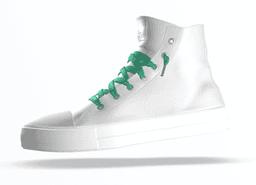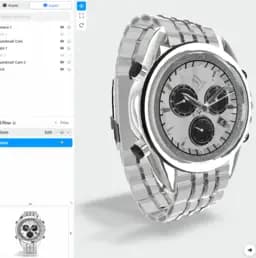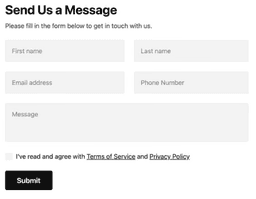The Dirty Downsides of Augmented Reality on the Web
It’s not all fun and games. The downsides of WebAR include technological barriers like limited device compatibility and performance constraints due to uneven lighting, user’s movements, and Internet bandwidth. It also suffers from quality issues, inability to be used offline, overuse of mobile device resources, inefficient tracking capabilities, and a steep learning curve for QR code activation.

In this article, readers will unravel the complexity of WebAR’s limitations and how these challenges can shape decisions in developing and implementing WebAR projects.
Barrier of Technology: The Limitations of WebAR
Without a doubt, WebAR is a breakthrough technology that stirs excitement in both developers and tech enthusiasts. However, this relatively new player in the tech arena comes with its own set of challenges. The crux of these challenges can often be traced back to technological barriers, primarily related to compatibility issues and performance constraints.
Compatibility Conundrum in WebAR

Interactive experiences through Augmented Reality (AR) are no longer confined to specialized apps but have found their way onto the internet. Demanding as it is exciting, WebAR’s integration into websites implies the need for compatibility with a versatile array of software and hardware devices. A noteworthy downside is that WebAR mainly functions on the latest versions of browsers like Safari and Chrome. Even mobile browsers need to be updated to ensure mobile camera access via the web is possible.
Therefore, the compatibility factor significantly impacts the overall accessibility and functionality of WebAR, making it a key hurdle to broader user adoption.
The Vulnerability of Lighting and Movement

Another significant technological limitation stands out in the context of the sensitivity of WebAR experiences. Increase in user interaction and higher demand in visual recognition implies that WebAR experiences are more susceptible to user movements and uneven lighting. Furthermore, they’re also affected by Internet bandwidth availability; a high-speed stable connection is required for an uninterrupted experience.
- The WebAR experience may not be smooth if a user is moving frequently.
- Inconsistent or insufficient lighting can affect the visual fidelity of the AR components.
- WebAR heavily relies on internet bandwidth, making it challenging to enjoy in areas with weak or unstable connections.
Limited 3D Rendering Capabilities and Performance Constraints
 Augmented reality lives and breathes in the realm of 3D, which makes 3D rendering a heart and soul of this technology. In the case of WebAR, this crucial aspect tends to pose challenges. Due to capacity restrictions, WebAR might compromise visual fidelity. An exciting AR experience requires detailed, visually compelling components which WebAR, in its current form, might find challenging to deliver consistently.
Augmented reality lives and breathes in the realm of 3D, which makes 3D rendering a heart and soul of this technology. In the case of WebAR, this crucial aspect tends to pose challenges. Due to capacity restrictions, WebAR might compromise visual fidelity. An exciting AR experience requires detailed, visually compelling components which WebAR, in its current form, might find challenging to deliver consistently.
Struggles with Oversized Content and Slow Internet Speed
The type and size of content fundamentally determines the potency of an AR experience. However, WebAR lags might occur due to oversized content or slow internet speeds. This latency can disrupt the immersive experience users expect from AR, marking it as another significant technological barrier to WebAR application.
Understanding the impacts and challenges of WebAR technology forms a crucial part of the journey as we head toward a more immersive digital future. Undeniably, WebAR has its shortcomings, but it’s worth noting that the technology is still in its early stages. As the landscape continues to evolve and mature, we can look forward to advancements that may mitigate these issues.
Content Quality Constraints: The Trade-off with Quick Access
WebAR comes with the novel convenience of swift access without the necessity for an app download. However, this feature also brings along its fair share of challenges, particularly concerning content quality and stability.
The Conflict between User-friendly Access Versus Quality Issues
While the selling point of WebAR might be its ease of access, there is a significant conflict with stability issues. Why is it so? Largely because the WebAR platform’s architectural nature that offers quick access may also pose drawbacks on the quality of augmented reality experiences it can deliver.

One of these drawbacks stems from the fact that WebAR vastly relies on a stable network connection to offer a seamless AR experience. It should be noted that this is a stark contrast to app-based AR solutions that have, over the years, shown more stability and better image recognition capabilities. In case you are wondering about these two platforms, here’s a comparative analysis:
| Feature | App-based AR | WebAR |
|---|---|---|
| Stability | High | Depends on Internet Connection |
| Image Recognition Capabilities | High | Comparatively Lower |
| Accessibility | Requires App Download | No App Download Required |
Necessity for Constant Connectivity
A highlighting concern is the necessity for consistent internet connectivity while using WebAR. This prerequisite introduces an unpredictability into the equation, as a dip in the connectivity during use can create disruptions, thereby affecting the user experience.

The need for continuous internet connection also makes offline use virtually impossible with WebAR, as any disruption to the network would culminate in a compromised AR experience or, worse, none at all. On the other hand, app-based AR solutions facilitate offline use, presenting a key advantage over WebAR.
Much as the promise of WebAR is enticing, understanding these challenges is crucial. For more insights into WebAR’s place in the larger context of XR technologies, read this detailed comparison of WebAR, VR, and XR technologies. In it you will find more nuances about the functionality and drawbacks of quick access AR technologies like WebAR.
- Stability: WebAR depends vastly on a stable network connection, unlike more stable app-based AR solutions.
- Quality: Image recognition capabilities in WebAR may not be on par with those of app-based AR solutions.
- Offline Use: Offline AR experiences, feasible with AR apps, are unachievable with WebAR.

Performance and Optimization Concerns on Mobile Devices
With the rise of WebAR, a browser-based version of Augmented Reality(AR), it is increasingly important to examine its impact on the performance of mobile devices. Notably, the effect it has on processing capabilities and battery life.
The Demand on Processing Capabilities and Battery Life
The innovative feature of WebAR is its ability to deliver AR experiences directly through the browser on your device. An amazing concept, yes, but it does have some implications for your device’s performance and battery life.
WebAR utilizes tools such as camera sensors, data analysis and consumes considerable computing resources to project and maintain the virtual layer on your physical environment. One of the key consequences of this process is the capacity it has to drain the battery of a mobile device if not developed correctly as cited in our comprehensive resource on the security and privacy aspects of WebAR.
Data Loading and Storage
Data loading and storage are among other concerns tied with WebAR. The drawing of 3D objects and animations require storage space and lead to significant data consumption, which if not handled adequately, can affect the application’s performance. Considerable data download for AR objects in WebAR is often likely to result in slow performance and consuming additional network bandwidth.
Table of Consequences
| Attribute | Consequence |
|---|---|
| Data Consumption | High Traffic Consumption |
| Processing Demand | Battery Drain |
| Lag Time | Slow Performance |
The more sophisticated the AR features, the more processing power it will need, pushing the device to its limits and affecting battery life. Each minute detail in the AR scenario added to the real-world view demands more of your battery life and computing power. Developers ought to consider this and seek ways to optimize their WebAR applications adequately to provide a seamless user experience.
Addressing the Issues
Optimization strategies, like 3D model compression, efficient coding, and minimizing action layers, can target these issues. Developers need to strike a balance in offering quality AR experience while being mindful of the bottleneck factors such as internet speed and a device’s processing capacity.

- The complexity of the AR scenario: The simpler the AR scenario, the less demand it will have on the device’s computing power and life of the battery.
- Size and format of the AR objects and animations: larger 3D models and advanced animations require more load time, consume more data, and lead to slower performance.
- The number of users and duration of use: the longer the AR experience lasts, the faster it will drain the battery.
In conclusion, it’s worth noting that as we delve further into understanding the implications of WebAR, the potential downsides like its effect on mobile devices ought not to outweigh the convenience and accessible user experience this technology offers.
Tracking Inefficiencies: A Crucial Drawback
The inclusive nature of WebAR, while a strength, also brings with it several challenges. Among these is the capability or, more accurately, the lack thereof, when it comes to tracking and registration. This inherent weakness illuminates a significant downside of the web-based augmented reality technology.
Understanding the Limitations of WebAR Tracking
Despite the rapid advancements in augmented reality, WebAR finds itself embattled with inherent limitations. Notably, these limitations center on its ability to adequately track and register virtual elements in a real-world environment. This is largely due to the fact that a web page can only access certain parts of a device’s capabilities.
- WebAR’s ability to successfully map physical spaces and overlay digital content is significantly restricted when compared to application-based AR.
- In some scenarios, digital content might drift or fail to align with the real world.
- This tracking inefficiency can impact how users interact with augmented content, influencing their overall experience and perception of WebAR.
Network Conditions: The Make-or-Break Factor
The performance of WebAR solutions remains heavily dependent on network conditions. Sub-standard internet speeds, data latency and network delays can cause noticeable disruption in user experience, making it less immersive and effective.

Network dependent technologies require robust and high-speed networks to deliver seamless user experiences. The advent of 5G networks is expected to substantially improve the situation
Will 5G Help Overcome WebAR Challenges?
December 2020 marked the conclusion of the 5G race with more than 100 operators offering 5G services worldwide, delivering extensively improved bandwidth and significantly reduced latency. In theory, this should coincide with a substantial upturn in the performance of web-based AR.
The mobile communications industry has set high expectations for the capacity of 5G networks, pointing to possibilities for unparalleled real-time interactivity and responsiveness. The hope is that 5G will serve as the cornerstone for a new era of immersive experiences powered by WebAR.

However, it is important to note that the real-world impact of 5G on WebAR efficiency remains to be seen. For a complete overview of the potential benefits of 5G on WebAR, we recommend this guide.
| Control Factor | WebAR | App-based AR |
| Access to device sensors and capabilities | Limited access leading to tracking inefficiencies | Higher access level enabling better tracking |
| Network dependence | Heavy dependence causing user experience disruptions | Less dependence leading to more stable experiences |
While 5G aims to reduce network latency and improve AR experiences, developers and users must remain acutely aware of and plan for the occasional limitations of WebAR’s tracking efficiency and network dependence.
Learning Curve with QR Codes for Activation
As the landscape of augmented reality evolves, it becomes more crucial to address the bottlenecks impeding its progress. One such challenge is the prevalent unfamiliarity with QR codes, which serve as the key to unlocking most WebAR experiences. Considering their vital role, it becomes imperative to bridge this gap of knowledge.
Understanding the Role of QR Codes
With WebAR experiences predominantly activated by QR codes, their lack of widespread use and understanding presents a considerable challenge. Yet, their importance can’t be understated. QR codes act as the bridge between the physical and virtual world, making WebAR experiences instantly accessible to anyone with a smartphone.

Impact on the Wider Adoption of WebAR
The challenge presented by the need for QR code literacy impact not only the potential users but also developers and marketers who see WebAR as a promising platform. The barrier could lead to slower adoption of WebAR technologies, which could, in turn, delay the realization of its full potential.
Solution: Greater Education Around QR Codes
As with any technology, user education paves the path to wider adoption. This holds particularly true for QR codes and their role in activating WebAR experiences. Let’s explore how it can help:
- Boost QR code literacy: Educational efforts can target the users, helping them understand how to read and utilize QR codes for engaging with WebAR.
- Promote WebAR benefits: Users should be aware of how WebAR expands the capacity of their mobile devices to interact with the world by transcending the physical-digital divide.
- Capitalize on the potential for growth: With just 37{66f7997927a862c9f57ec7dffc6a2fe6d405caee7001dff533b976d48fe118b1} of the U.S. population using QR codes as of 2019, there’s a wide room for expansion in usage.
Key Statistics Related to QR Code Usage

Here are some pertinent facts to consider:
| The necessity for QR code literacy for WebAR engagement | Significant growth potential for QR code usage |
| Only 37{66f7997927a862c9f57ec7dffc6a2fe6d405caee7001dff533b976d48fe118b1} of the U.S. population has utilized QR codes as of 2019 | Education about QR codes could forge the path to broader WebAR adoption |
Evaluating the data points, it becomes apparent that broader QR code literacy is crucial for extending the reach of WebAR. Read more about this with our our guide on how QR Codes Are Fueling the Future of Augmented Reality on the Web
How Increased Understanding of QR Codes Can Facilitate Utilization
The potential for growth in QR code usage is significant. As more consumers learn how to read and use QR codes, they’re likely to find WebAR experiences more accessible and engaging. Consequently, this growth feeds directly into the wider adoption and greater potential realization of WebAR.








